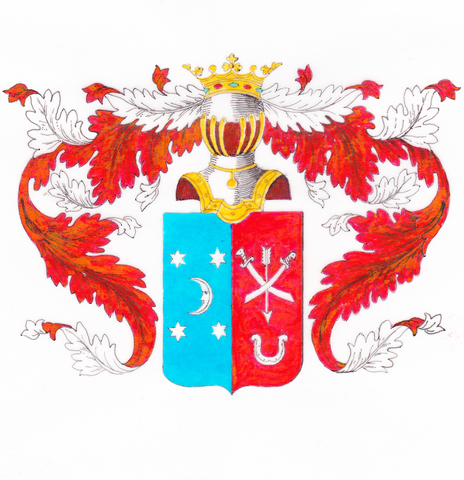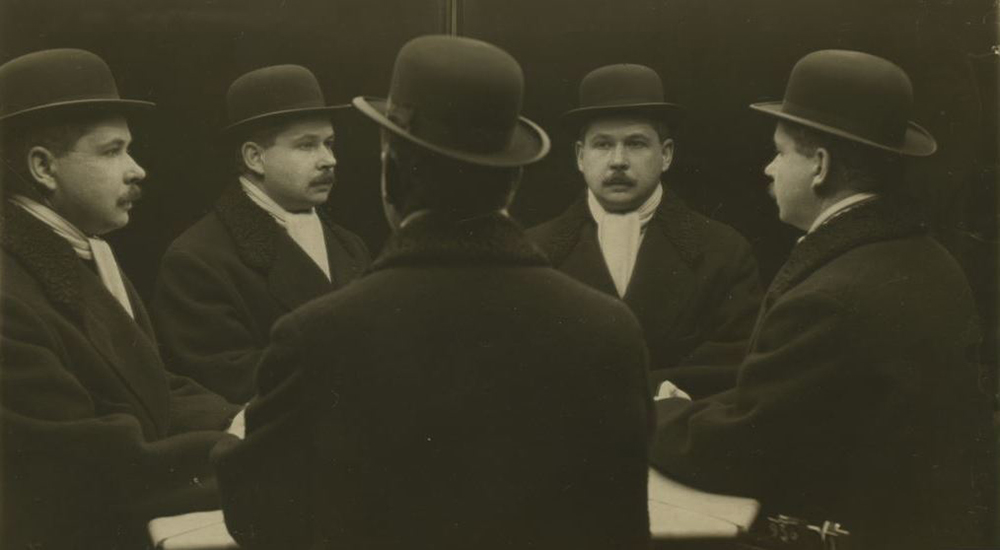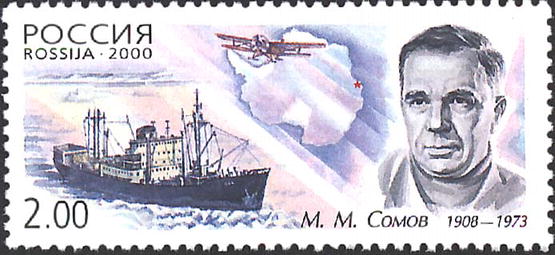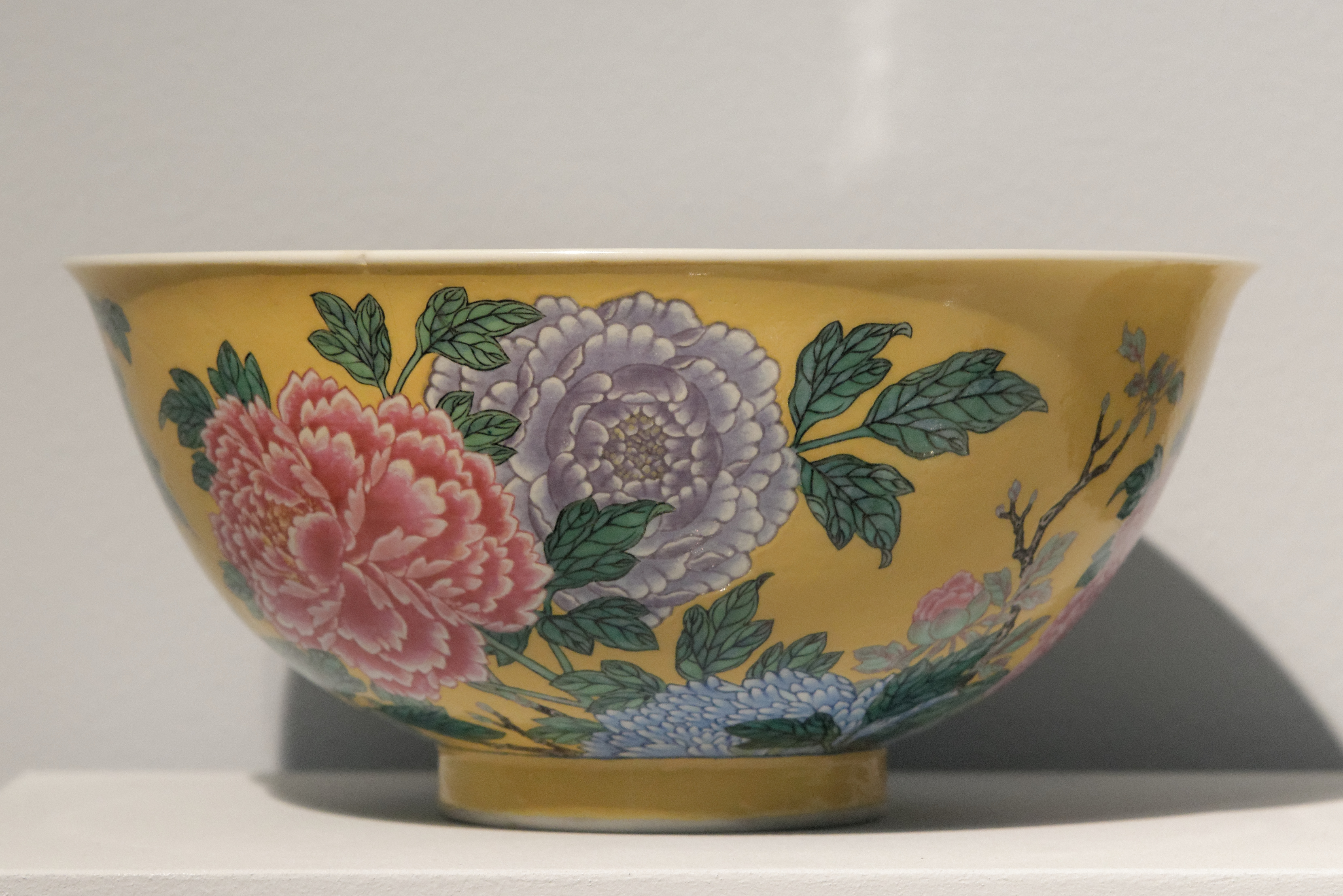|
Somov
The House of Somov ( Сомовы, Somoff, Somow) is a Russian noble family descended from the Khans of the 14th century. This family descend from Prince (Murza; Mirza) Oslan - Chelebey, who left the Golden Horde leading an army to support Dmitry Donskoy, Prince of Moscow, during the wars with other principalities and tartarian domination. Oslan accepted to be baptized in 1389 with the name of Prokofiev, married Maria Zotikova Zhitova who was the daughter of Prince Dimitri's Stolnik, Zotik Zhitov. They had five sons: (1) Lev, nicknamed Wide Mouth; (2) Fiodr; (3) Arseny - founder of Arseniev. (Арсеньевы); (4) Jacob Kremenetsky - founder of Kremenetsky and Yanovtsevyh; (5) Paul - founder of Pavlovs. And Lev Prokofievich, who had two sons: (1) Zechariah, founder of Rtishev and Zhdanovs. (Ртищевы)br>Ртищевы - сайт однофамильцев (Rtischev Family) and (2) Andrey, nicknamed "Som" (Catfish) founder of Somov. Notable members * Konstantin S ... [...More Info...] [...Related Items...] OR: [Wikipedia] [Google] [Baidu] |
Somov Family Coat Of Arms
The House of Somov ( Сомовы, Somoff, Somow) is a Russian noble family descended from the Khans of the 14th century. This family descend from Prince (Murza; Mirza) Oslan - Chelebey, who left the Golden Horde leading an army to support Dmitry Donskoy, Prince of Moscow, during the wars with other principalities and tartarian domination. Oslan accepted to be baptized in 1389 with the name of Prokofiev, married Maria Zotikova Zhitova who was the daughter of Prince Dimitri's Stolnik, Zotik Zhitov. They had five sons: (1) Lev, nicknamed Wide Mouth; (2) Fiodr; (3) Arseny - founder of Arseniev. (Арсеньевы); (4) Jacob Kremenetsky - founder of Kremenetsky and Yanovtsevyh; (5) Paul - founder of Pavlovs. And Lev Prokofievich, who had two sons: (1) Zechariah, founder of Rtishev and Zhdanovs. (Ртищевы)br>Ртищевы - сайт однофамильцев (Rtischev Family) and (2) Andrey, nicknamed "Som" (Catfish) founder of Somov. Notable members * Konstantin S ... [...More Info...] [...Related Items...] OR: [Wikipedia] [Google] [Baidu] |
Konstantin Somov
Konstantin Andreyevich Somov (russian: Константин Андреевич Сомов; November 30, 1869 – May 6, 1939) was a Russian artist associated with the ''Mir iskusstva''. Biography Early life Konstantin Somov was born on November 30, 1869 in St. Petersburg. He was the second son of art historian and curator of the Hermitage Museum Andrei Somov. His mother, Nadezhda Konstantinovna, came from the noble family of the Lobanovs. She was well-educated and a musician. She instilled in her children a love of theater, music, and painting. The Somovs had a large private collection of old prints, paintings and drawings. Young Konstantin dreamed of becoming an artist from a very young age. For the first time Alexandre Benois met with Somov in the private gymnasium of Karl May. Dmitry Filosofov also studied there, and Somov found a common language and even became friends with him. Benois in his memoirs says that their manner of sticking together, but apart from everyon ... [...More Info...] [...Related Items...] OR: [Wikipedia] [Google] [Baidu] |
Orest Somov
Orest Mikhailovich Somov (Russian and uk, Орест Михайлович Сомов, romanized Ukrainian standard: ''Orest Mykhailovych Somov/Somiv'') ( – ) was a Russian romantic writer of Ukrainian origin. He studied at Kharkiv University, where he became an admirer of Romantic literature and Gothic fiction. In 1817 he moved to Saint Petersburg where he continued his literary career. In addition to being a writer and translator, he established himself as a critic, editor and publisher, thus becoming one of the first professional men of letters in the Russian Empire. Somov was drawn to the folklore of his native Ukraine and much of his writing refers to Ukrainian history and folklore. Somov was a popular writer during his lifetime. His works on Ukrainian themes made a big impact on the literary canon of the 1820s. His literary works were widely read and his critical opinion was highly regarded. However, after Somov's death, his name and works were consigned to oblivion ... [...More Info...] [...Related Items...] OR: [Wikipedia] [Google] [Baidu] |
Mikhail Mikhailovich Somov
Mikhail Mikhailovich Somov (russian: Михаил Михайлович Сомов; , in Moscow – 30 December 1973, in Leningrad) was a Soviet oceanologist, polar explorer, Doctor of Geographical Sciences (1954). Somov graduated from the Moscow Hydrometeorological Institute in 1937. In 1939, he was appointed senior researcher at the Arctic and Antarctic Research Institute. In 1950–1951, Mikhail Somov headed a drift-ice station ''North Pole-2''. In 1955–1957, he became the commander of the first Soviet Antarctic Expedition. Mikhail Somov was also the first Soviet delegate to the Scientific Committee on Antarctic Research. The Somov Sea north of Victoria Land and a glacier in Queen Maud Land (both East Antarctica) bear Mikhail Somov's name, as well as a scientific icebreaker. A minor planet 3334 Somov discovered by Czech astronomer Antonín Mrkos in 1981 is named after him. Somov was awarded the title Hero of the Soviet Union in 1952. Awards * Hero of the Soviet Union (195 ... [...More Info...] [...Related Items...] OR: [Wikipedia] [Google] [Baidu] |
Osip Ivanovich Somov
Osip Ivanovich Somov (russian: Ио́сиф (О́сип) Ива́нович Со́мов; 13 June 1815, Moscow Governorate – 8 May 1876, Saint Petersburg) was a Russian mathematician A mathematician is someone who uses an extensive knowledge of mathematics in their work, typically to solve mathematical problems. Mathematicians are concerned with numbers, data, quantity, structure, space, models, and change. History On .... References * * * External links * * 1815 births 1876 deaths Russian mathematicians 19th-century mathematicians from the Russian Empire Full members of the Saint Petersburg Academy of Sciences {{russia-mathematician-stub ... [...More Info...] [...Related Items...] OR: [Wikipedia] [Google] [Baidu] |
Naryshkin Family
The House of Naryshkin (russian: Нарышкины) is a noble Moscow boyar family of Crimean Tatar descent, going back to a certain Mordko Kurbat Naryshko, a Crimean Tatar, who moved to Moscow in the 15th century.Sergei O. Prokofieff, ''The Spiritual Origins of Eastern Europe and the Future Mysteries of the Holy Grail'', Temple Lodge Publishing (1993), p. 460 It became allied to the ruling house in 1671 when the great beauty Natalya Naryshkina (daughter of Kirill Poluektovich Naryshkin) married Alexis of Russia, later becoming the mother of Peter the Great. The Naryshkin family was persecuted under the regency of Tsarevna Sophia Alekseyevna of Russia, but were then highly favoured by Peter and his descendants and played a major part in Russian life. Streltsy revolt against Naryshkin family During the Streltsy uprising, soldiers of the Streltsy staged a revolt against the Naryshkin family (the relatives of Peter’s mother, who had assumed actual power). Their uprising was cr ... [...More Info...] [...Related Items...] OR: [Wikipedia] [Google] [Baidu] |
Famille Apraxine
Famille jaune, noire, rose, verte are terms used in the West to classify Chinese porcelain of the Qing dynasty by the dominant colour of its enamel palette. These wares were initially grouped under the French names of ("green family"), and (pink family) by Albert Jacquemart in 1862. The other terms (yellow) and (black) may have been introduced later by dealers or collectors and they are generally considered subcategories of ''famille verte''. ''Famille verte'' porcelain was produced mainly during the Kangxi era, while ''famille rose'' porcelain was popular in the 18th and 19th century. Much of the Chinese production was Jingdezhen porcelain, and a large proportion were made for export to the West, but some of the finest were made for the Imperial court. Famille verte ''Famille verte'' (康熙五彩, ''Kangxi wucai'', also 素三彩, ''Susancai''), adopted in the Kangxi period around 1680, uses green in a few different shades and iron red with other overglaze colours. It develo ... [...More Info...] [...Related Items...] OR: [Wikipedia] [Google] [Baidu] |
House Of Dolgorukov
The House of Dolgorukov () is a princely Russian family of Rurikid stock. They are a cadet branch of the Obolenskiy family (until 1494 the rulers of Obolensk, one of the Upper Oka Principalities) and as such claiming patrilineal descent from Mikhail of Chernigov (d. 1246). The founder of the Dolgorukov branch of the Obolenskiy is Prince Ivan Andreevich Oblenskiy (15th century), who for his vengefulness was given the nickname of Долгорукий ''Dolgorukiy'', i.e. "far-reaching". Obolensk was incorporated into the expanding Grand Duchy of Moscow in 1494, and the house of Dolgorukov became a powerful noble family in Tsardom of Russia and the Russian Empire. List of members Members of the House of Dolgorukov include: *Maria Dolgorukaya (d. 1580), a wife of Ivan IV *Grigorij Ivanovich Menshoi Tchyort ("the Devil") Dolgorukov (Князь Григорий Иванович Меньшой Чёрт Долгоруков), died after 1598, governor under Ivan the Terrible. *Aleks ... [...More Info...] [...Related Items...] OR: [Wikipedia] [Google] [Baidu] |
Golovin (surname)
Golovin (russian: Головин) or Golovina (feminine; Головина) is a Russian language, Russian surname, derived from the word голова (''golova'', meaning "head" and probably referring to the head of a household or village).Kalmakoff, Jonathan J"Origin and Meaning of Doukhobar Surnames" ''Doukhobor Genealogy'', 2013. Retrieved on 6 January 2016. The surname may refer to: *Alexis Golovin (born 1945), Russian pianist *Aleksandr Golovin (artist) (1863–1930), Russian artist *Aleksandr Golovin (footballer) (born 1996), Russian football player *Aleksei Golovin (born 1981), Russian football player *Alexander Golovin (ice hockey) (born 1983), Russian ice hockey player *Alexander Vasiliyevich Golovin (born 1949), Russian diplomat *Anastasia Golovina (1850–1933), Bulgarian doctor *Boris Golovin (born 1955), Russian musician *Elena Golovina (born 1961), Russian athlete *Fyodor Alexeyevich Golovin (1650–1706), Russian politician *Fyodor Alexandrovich Golovin (1867–1937), ... [...More Info...] [...Related Items...] OR: [Wikipedia] [Google] [Baidu] |
Nogai Khan
Nogai, or Noğay (; also spelled Nogay, Nogaj, Nohai, Nokhai, Noqai, Ngoche, Noche, Kara Nokhai, and Isa Nogai; died 1299/1300) was a general and kingmaker of the Golden Horde and a great-great-grandson of Genghis Khan. His grandfather was Bo'al/Baul/Teval, the seventh son of Jochi. Nogai was also a notable convert to Islam. Though he never formally ruled the Golden Horde himself, he was effectively the co-ruler of the state alongside whatever khan was in power at the time and had unrestricted control over the portions west of the Dnieper. At his height, Nogai was one of the most powerful men in Europe and widely thought of as the Horde's true head. The Russian chroniclers gave him the title of tsar, and the Franciscan missionaries in the Crimea spoke of him as a co-emperor. Name French historian Paul Pelliot wrote that Nokhai meant "dog". Although in the Mongolian language, "nokhoi" (in Mongolian script: , ''nokhai'') literally means a "dog", it does not necessarily mean a parti ... [...More Info...] [...Related Items...] OR: [Wikipedia] [Google] [Baidu] |
Urusov
Urusov/Ouroussoff (russian: Урусов) and Urusova/Ouroussoff (russian: Урусова; feminine) is a Russian princely family of Nogai origins (from turkic ''urus'', "russian") Famous members * Andrey Urusov (also known as Kasim-Murza, 1590–1647) — 17th century Novgorod military chief, the son of Satyi-Murza, founder of this branch of Tatar Princes' family * Alexander Ivanovich Urusov (1843–1900) - Russian lawyer and literary critic * Alexander Mikhaylovich Urusov (1766–1853) — Moscow Court Office's president, Alexander Ivanovich Urusov's grandfather * Vasily Urusov (d. 1741) — Russian Rear admiral, the founder of the Russian Caspian flotilla * Lev Vladimirovich Urusov (1877–1933) — Russian diplomat * Sergey Nikolayevich Urusov (1816–1883) — Russian politician * Sergey Semyonovich Urusov (1827–1897) — Russian chess player * Sergey Dmitriyevich Urusov (1862–1937) — Russian politician * Nicolai Vladimirovich Ouroussoff (born October 3, 1962) - A ... [...More Info...] [...Related Items...] OR: [Wikipedia] [Google] [Baidu] |
Boris Sheremetev
Count Boris Petrovich Sheremetev (russian: Граф Бори́с Петро́вич Шереме́тев, tr. ; – ) was an Imperial Russian diplomat and general field marshal during the Great Northern War. He became the first Russian count in 1706. His children included Pyotr Sheremetev and Natalia Sheremeteva. Early life In his youth, Sheremetyev was a page to Tsar Alexis I before starting his military career. From 1671 he served at the imperial court. In 1681 he was a leader at Tambov, commanding the armies fighting the Crimean Khanate, and from 1682 he was a boyar. From 1685 to 1687 he participated in negotiations and the conclusion of the " Eternal Peace of 1686" with Poland and the allied treaty with Austria. From the end of 1687 he commanded the armies in Belgorod defending Russia's southern border, and participated in the Crimean campaigns. After Peter I gained power in 1689, he joined him as a fellow campaigner. He participated along with Mazepa in the war against Tu ... [...More Info...] [...Related Items...] OR: [Wikipedia] [Google] [Baidu] |




.jpg)

.jpeg/1200px-Bataille_du_Terek_(1262).jpeg)

